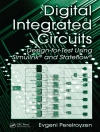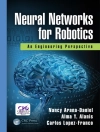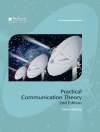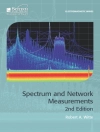The uses of multimedia are rapidly increasing. Its power to present
information in ways not previously possible and its integration of
resources, allow for the creation of rich learning environments.
Perspectives on Multimedia: Communication, Media and Information
Technology provides a critical examination of the latest multimedia
developments and approaches, such as Interface Technology and Qo S
architectures.
Topics covered include:
* The key concepts intrinsic to digital forms of multimedia:
integration, interactivity, hypermedia, immersion, narrativity and
hybridity.
* The development of Information Technology (IT) usage in society
and in the business community.
* How modern IT enables private companies and public
organisations to support business operations, create new business
opportunities, and to promote more proactive service
management.
* Multimedia from a computer science perspective and how computer
science provides the technical foundation for the computer software
and hardware that drives the information age.
Gives a broad range of perspectives on key issues for interactive
multimedia in organisations and industry today. This book will be
of interest to practitioners involved in multimedia development in
an organisation, management consultants giving professional advice
on digital solutions and information technology matters to their
customer organisations and academics focusing on business and
technical aspects of multimedia frameworks.
Tabela de Conteúdo
Foreword.
Preface.
1. Multimedia: Back To The Future! (by Robert Burnett).
1.1 Introduction.
1.2 Multimedia as Art and Science.
1.3 Secret History of Multimedia.
1.4 Multimedia as Art and Performance.
1.5 Summing Up.
1.6 References.
2. Alternative Approaches to Interface Technology (by Steve Gibson).
2.1 Introduction.
2.2 Cybernetic Systems.
2.3 ‘Hands-free’ Tracking Systems.
2.4 MIDI Instruments as Visual Triggers.
2.5 Conclusions.
2.6 References.
3. Transparency, Standardization and Servitude: the Paradoxes of Friendly Software (by Andreas Kitzmann).
3.1 Introduction.
3.2 Digital Promises.
3.3 Find Where Everything Is.
3.4 The Question of Practice.
3.5 References.
4. Business Modelling as a Foundation for Multimedia Development-Concerning Strategic, Process and Systems Levels in Organizations (by Anders G. Nilsson).
4.1 Business Modelling-Some Needs in Practice.
4.2 Business Modelling-Thre e Levels of Development Work.
4.3 Business Modelling and Multimedia.
4.4 Business Modelling-Systematic Work in Phases.
4.5 Business Modelling of Values, Operations and Objects.
4.6 Business Modelling for Multimedia-Main Messages.
4.7 References.
5. How Should Interactive Media Be Discussed For Successful Requirements Engineering? (by Lennart Molin and John S¨oren Pettersson).
5.1 Specifying Requirements.
5.2 Requirements Work In Multimedia Systems Development.
5.3 Ozlab-A Simple Tool for Prototyping Interactivity.
5.4 Challenges for Multimedia Requirements Work.
5.5 Writing Requirements vs Visualizing Requirements.
5.6 Requirements Specification By Content Professionals.
5.7 Concluding Remarks.
5.8 References.
6. Evaluating Interactive Multimedia in an Inexpensive and Timesaving Way-Illustrated by Business Case Studies (by Louise Ulfhake).
6.1 Background.
6.2 The Multimedia Case Studies.
6.3 Evaluation Methods.
6.4 What to Evaluate.
6.5 Evaluation of the Structure.
6.6 Evaluation of the Interaction.
6.7 Evaluation of the Usability.
6.8 Evaluation of the Productivity.
6.9 Conclusion.
6.10 References.
7. Conceptual Modelling for Creating Multimedia Databases (by Lars Erik Axelsson).
7.1 Introduction.
7.2 The ISO Report.
7.3 Conceptual Modelling in a Multimedia Environment.
7.4 Conclusions.
7.5 References.
8. Adding Security to Qo S Architectures (by Stefan Lindskog and Erland Jonsson).
8.1 Introduction.
8.2 An Overview of Qo S.
8.3 Introducing Security in Qo S Architectures.
8.4 Further Readings.
8.5 Concluding Remarks.
8.6 Acknowledgments.
8.7 References.
9. Partially Reliable Multimedia Transport (by Katarina Asplundand Anna Brunstrom).
9.1 Introduction.
9.2 Transmission Control Protocol-TCP.
9.3 Design of PRTP.
9.4 Performance Evaluation.
9.5 Further Reading.
9.6 Concluding Remarks.
9.7 References.
10. Bit Error Tolerant Multimedia Transport (by Stefan Alfredsson and Anna Brunstrom).
10.1 Introduction.
10.3 Performance Evaluation.
10.4 Experiment Results.
10.5 Further Readings.
10.6 Concluding Remarks.
10.7 References.
11. Transcoding of Image Data (by Johan Garcia and Anna Brunstrom).
11.1 Introduction.
11.2 JPEG Coding.
11.3 JPEG Compression Transcoding.
11.4 Robust JPEG Transcoding.
11.5 Further Reading.
11.6 Concluding Remarks.
11.7 References.
About the Authors.
Index.
Sobre o autor
ROBERT BURNETT is professor of Media and Communication
Studies, Karlstad University. Burnett is the author of The
Global Jukebox: The International Music Industry (Routledge,
1996), Concentration and Diversity in the International
Phonogram Industry (Gothenburg, 1990) and the co-author of,
Web Theory (Routledge 2002, with David Marshall).
His main research areas include the global media, the music
industry, digital media, and the Internet.
Burnett has been a regular commentator on global media issues with
appearances on radio and television programs and commentaries for
newspaper and magazine articles. He is one of the founders of the
Communication, Media and Information Technology (CMIT) Research
Group as well as the Human IT Research Group. Burnett has been a
visiting scholar in Canada, the USA, Scotland, Norway and Zimbabwe.
ANNA BRUNSTROM received MSc and Ph D degrees in computer
science from College of William and Mary, Virginia, USA in 1993 and
1996, respectively. In 1996 she joined the Department of Computer
Science at Karlstad University where she is now a professor. She is
research manager for the distributed systems and communications
research group and also served as research manager for the
Department of Computer Science from July 1998 until June 2002. She
leads several research projects on communication protocols and is
active in national and international projects on wireless
communications. She has authored and co-authored two book chapters
and over 30 scientific papers. She is a member of IEEE and ACM.
ANDERS G. NILSSON is professor of information systems at
Karlstad University, Sweden. He has a Ph D in information management
from Stockholm School of Economics, and is a research partner at
the Institute for Business Process Development (Institute V) in
Stockholm. Anders has been working as a researcher with the ISAC
approach to information systems development, the SIV method for
acquisition of standard application packages (enterprise systems,
ERP systems) and a business modeling framework for creating method
combinations. He has also been active as an adviser to many change
projects in private industry and the public sector, and has been
fro many years deputy chair for the special interest group for
systems development (SIG-SYS) at the Swedish Information Processing
Society. Anders is author/co-author of 14 books on business and
systems development.












